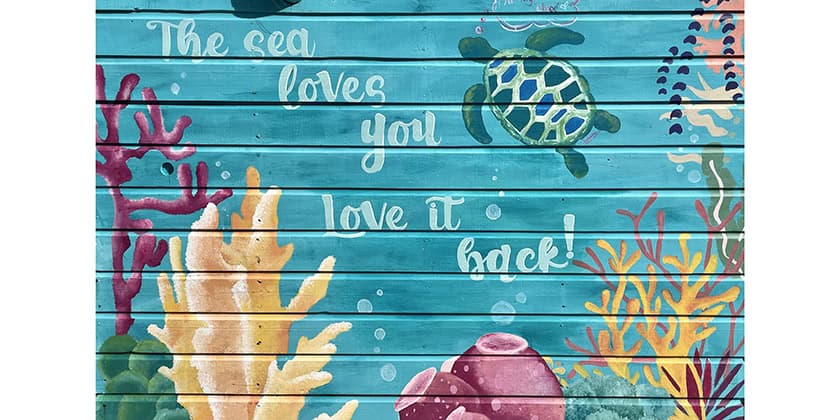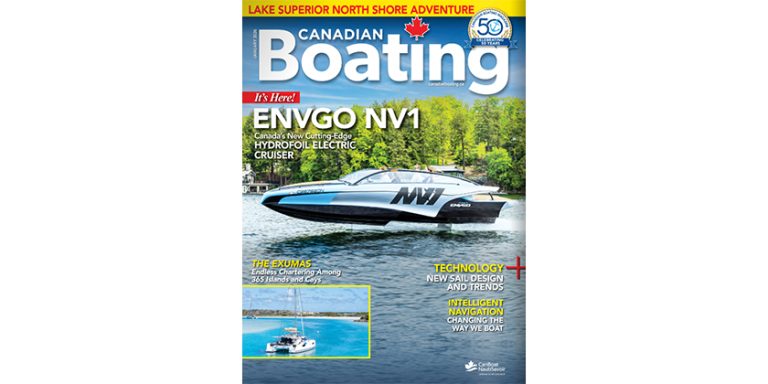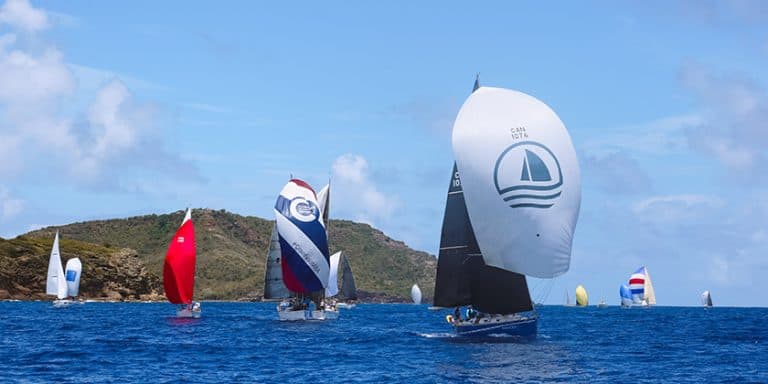Hiding Out in Belize
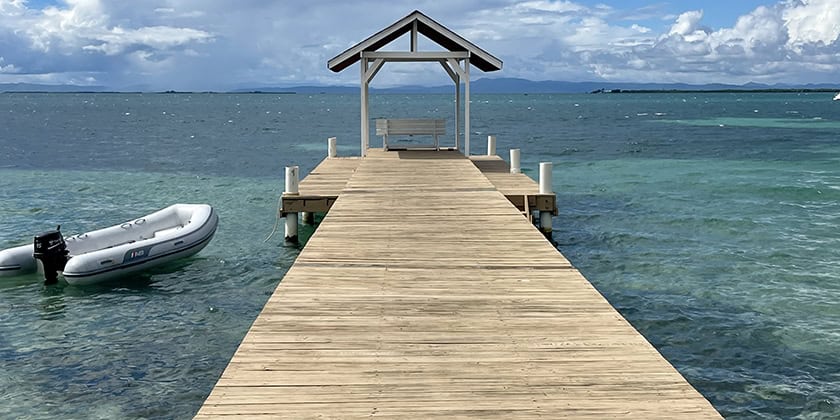
By Zuzana Prochazka
Dodging holiday havoc in the tropics
Getting out of town was top-of-mind as it was only November and I was already saturated with Christmas traditions – the music, the glitter, the cookies, the sales. A week in relatively remote Belize was the siren song so we booked a 45-foot catamaran with The Moorings and packed our bags.
The Moorings/Sunsail charter base at Laru Beya Marina in Placencia is either a 45-minute puddle jump or a 3-hour shuttle bus ride south of Belize City onto a peninsula ringed with white sand and mangroves. It’s a large, well-run base with lots of boats so although we were nearly alone on shoulder season, it was clear that a month later, all these cats would be working hard out on the water.
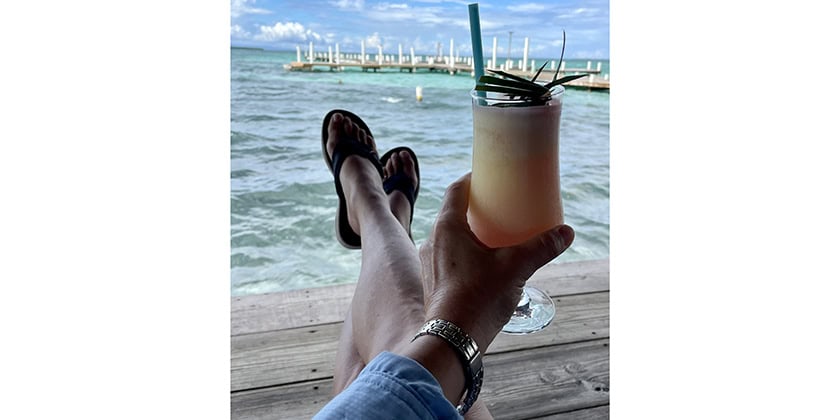
A charter skipper must obtain a “Belize Port Authority Temporary Certificate of Competency” from the government and watch an online video about the very shallow waters of these cruising grounds where the coral heads are many and the navigation rules are interpretive. There was more than one instance when the charts had us in the right place but the rocks and coral below made us hold our breath as the depth sounder read zero. Thank goodness for the offset.
Belize is tucked between Mexico and Guatemala on the Caribbean side of Central America and extends its long strand of 350 islands north and south from where we started. We headed south first to an anchorage outside of Monkey River that leads into the interior. It’s aptly named for the howler monkeys that live on its banks. Our panga guide was eagle-eyed as he pointed out dozens of birds, snakes and a crocodile sunning itself in the grass. We heard the screaming monkeys in the forest but when we actually landed and hiked to a tall tree where they sat up in the crown, they refused to cooperate for the tourists and stayed silent. The mosquitos however were only too glad to see us.
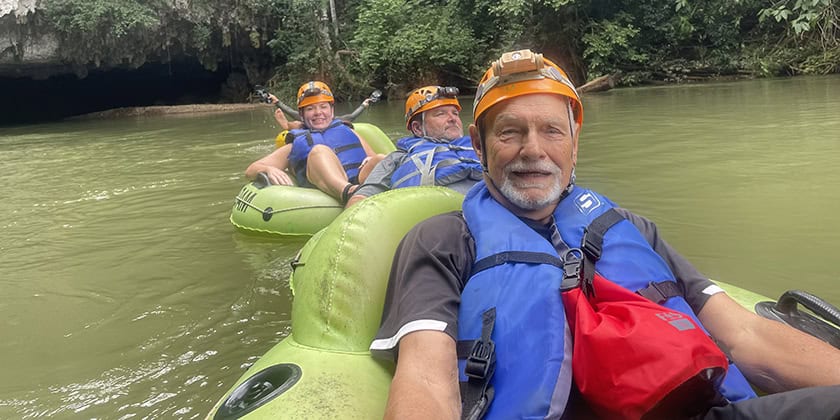
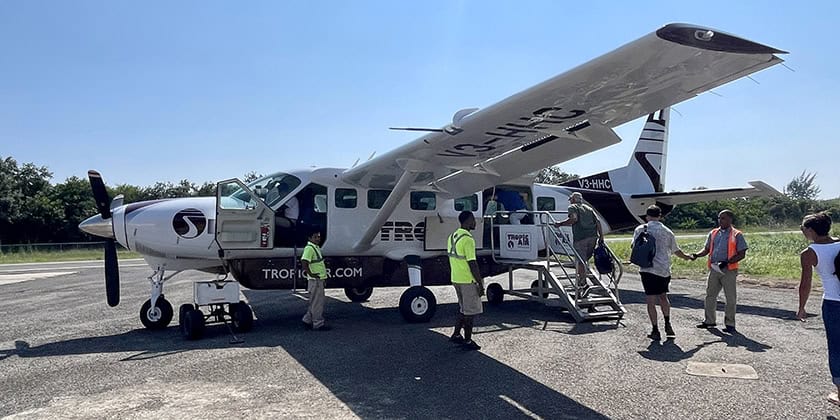
The rest of the week we wound our way between the cays from one postcard-perfect remote island to another. Ray Cay was a highlight not only for its fantastic restaurant but also for the preserve that borders it to the north. We had to book a panga tour since it’s a national park and you can’t dinghy in on your own but that meant we gained the benefit of local knowledge. We first anchored by a small island which we circumnavigated on a long snorkel tour. The water was choppy and two of our crew turned a bit green in the waves which was too bad because the second stop was spectacular.
Small fishing boats plie these waters and stay offshore for days at a time filling their holds before they return to the mainland. There are three to four fishermen aboard these 30-footers. They live on deck since the holds are full of ice to keep the fish fresh and everything that swims in the sea recognizes their hulls. Sharks, remoras, and giant rays gather for the smorgasbord below as the fish are cleaned. We anchored next to one of these boats and jumped into what felt like an aquarium. Everything circled around us at once. At one point, I literally bumped heads with a huge turtle as we both surfaced.
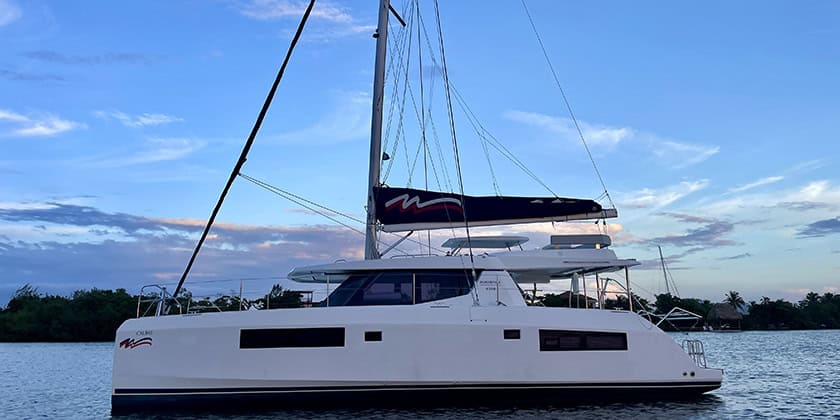
Over the course of the week, we made our way lazily from one island to the next. The Twin Cays provided the safest anchorage with mud for the anchor to grab and mangroves all around us as if we were in a lake. The night was calm and silent but we didn’t swim due to crocodile warnings.
We spent a completely different night at Ray Cay in a northerly blow where I sat anchor watch much of the night. That’s how I spotted a boat which had dragged anchor near shore, made its way through the narrow channel in the dark and took what I assume was a nail-biting trip to the back of the island to hide from the wind.
On the way to the Pelican Cays, we motored along in poor visibility and pummeling rain. Once there, we took a mooring and dinghied to the Pelican Beach Restaurant to meet Dustin and his family. They’ve carved out a home as well as a bar on this coral cay and live off the grid with a teenager who is remarkably mellow so long as the sparse WiFi is turned on.
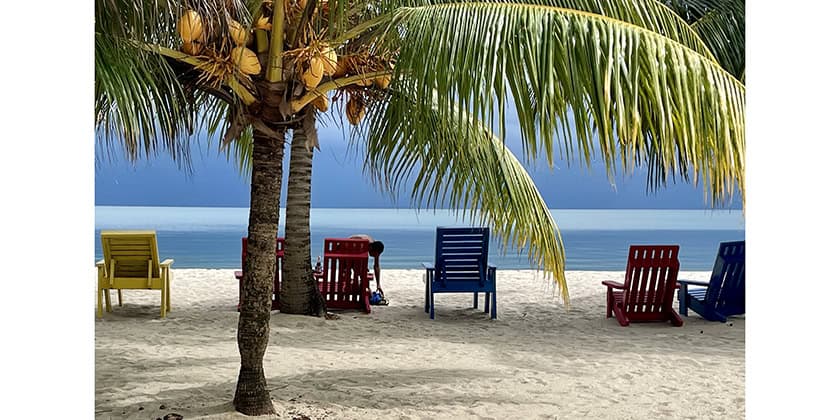
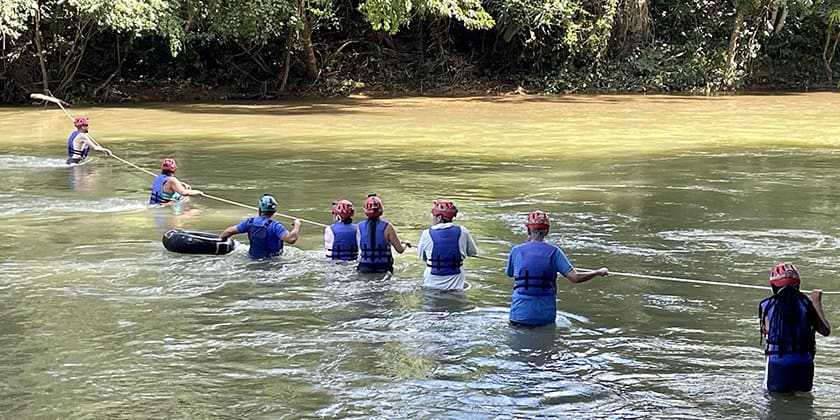
The nuts and bolts
All flights go through Belize City. We didn’t overnight there so I can’t comment on whether there’s anything to recommend it. We reserved a shuttle ride down but, on the way back, we flew via Tropic Air and their 10-seater planes. If you’re a nervous flyer, the shuttle may be the better option.
There are few moorings and just about no large public docks in the central islands so brush up on your anchoring skills and ask for a boat with a water maker because there are few opportunities to fill up once you leave town.
Dust off your certifications because the Belize government must approve your experience level before you arrive. The Moorings will help with this process but it’s up to you to qualify.
Weather forecasts are ‘big picture’ meaning you’ll have an idea of what’s happening in the region but the winds change directions and funnel between the land masses, especially in November. Although I tried creating a sailor’s itinerary, most of our sailing was done on a straight-ish line between the mainland and the islands but not in the nooks and crannies of the cays. The prevailing winds are easterly trades at 10-20 knots, but we got a mix from all directions.
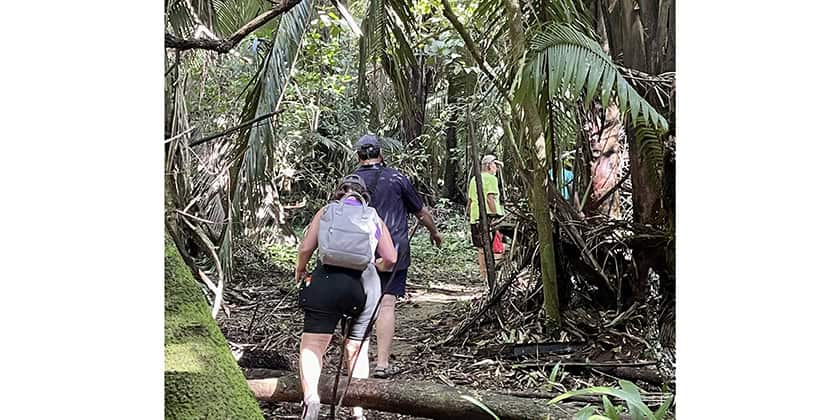
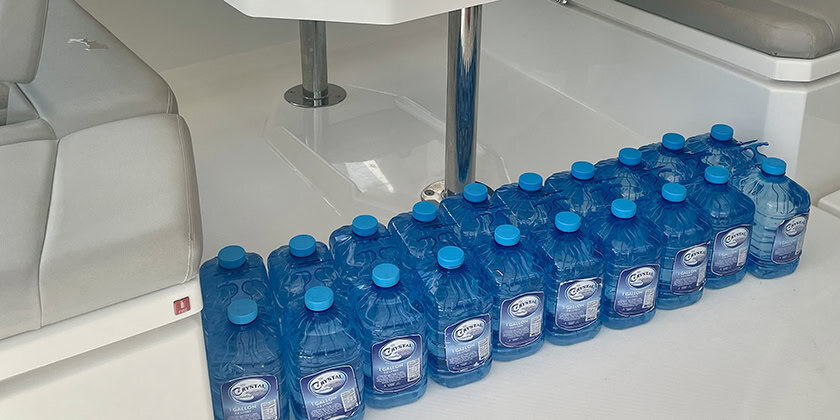
There are lots of places to relax for a few days before or after your charter in swanky resorts like Naia as well as budget-friendly rooms overlooking a yard full of chickens. We stayed at Placencia Pointe Townhomes at the bottom of the peninsula. These upmarket two-story modern condos are on their own beach and are walkable from the center of town and the Brewed Awakenings coffee shop.
The currency is the Belizean dollar that exchanges 2:1 with the US dollar which also works. Credit cards are accepted in restaurants, but cash is needed with street vendors selling everything from juice drinks to handmade jewelry. English is the national language but the locals add a dialect that will bend your ears. Provisioning is easy with multiple large markets in town, or you can let The Moorings do the heavy lifting. Also, many of the cays have creative restaurants serving up fish that were caught that morning.
The jungles of Belize are a draw as are the Mayan ruins so consider an excursion to the interior. I booked via Truly Wild Belize for a drive to Xunantunich which we unfortunately didn’t reach due to recent heavy rains that put the car ferry out of commission. Our driver detoured to Cahal Pech, a smaller ancient village where we climbed the pyramids free from crowds.
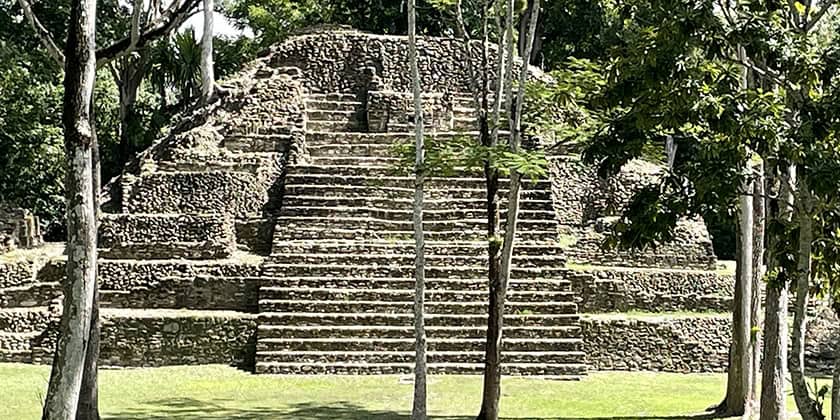
We also opted for cave tubing which was open despite the river being swollen and turbulent. To get to the launch spot, we clung to a rope stretched across the fast water and then hiked up to a cave. Our guide tied the tubes together into a bright green centipede and we drifted in and out of caves and along the banks of the jungle. It’s a can’t miss.
One final word: Belize is shallow. You can follow the charts to the inch and still find yourself on top of coral heads and shifting sandbars. You can’t get lazy with navigation and you must keep a sharp lookout. It’s a bit anxiety-inducing but well worth it.
Our escape from the madness of the holidays was brief but the tan and the mental calm lasted through New Year’s. But even better than the respite from Christmas was chartering during shoulder season when we had the run of the place. I’m thinking I may be skipping the cookies next year and making this the new must-do tradition.
